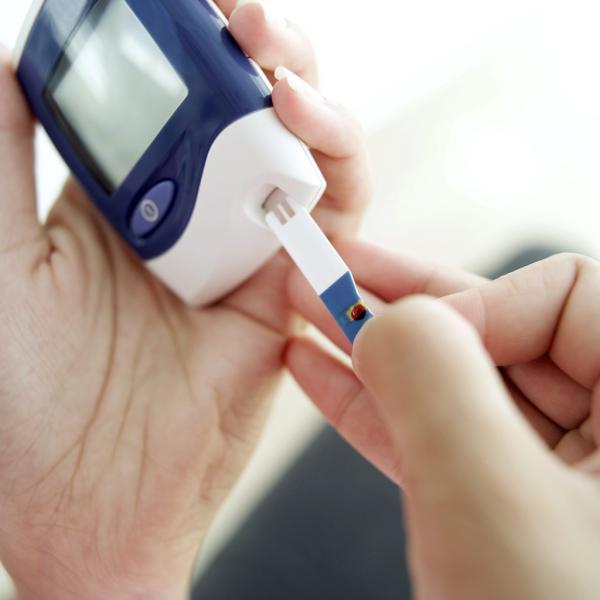
Diabetes is a chronic disease that can cause serious health complications and death. According to the Centers for Disease Control and Prevention (CDC), 29.1 million (9.3%) people in the U.S. have diabetes. In addition, the CDC reports that of those 29.1 million, 8.1 people are undiagnosed. The risk for serious complications is increased for people who are not diagnosed and are not treating the cause of the damage to their bodies.
Diabetes is an increase of glucose, or sugar, in the blood. Normally this sugar is used for energy, but when a person cannot produce insulin to change the sugar to energy, the sugar causes harm to the body. Untreated elevated blood sugar results in complications that can include: blindness, heart attack, stroke, need for dialysis, amputation, problems with healing, or infection.
Symptoms can sometimes be subtle, and it may take time to recognize them before getting checked. Symptoms that may be a sign of diabetes include:
- Frequent urination
- Excessive thirst
- Extreme hunger, even when eating
- Feeling very tired most of the time
- Sudden vision changes/blurry vision
- Having tingling or numbness in hands and/or feet
- Cuts/injuries that heal slower than normal
- Very dry skin
- Developing more infections that normal
Knowing the risk factors for diabetes is also important. The risk for developing diabetes increases as a person ages and can depend on race/ethnicity. In addition to age or race/ethnicity, a person who is overweight, has a family history of diabetes, had gestational diabetes while pregnant, or does not exercise also has increased risk for developing diabetes.
To reduce the risk of developing diabetes, it is important to maintain a healthy weight, be active and see your primary provider to have appropriate screenings. Those who are at risk due lifestyle, have been told they have prediabetes, or have diabetes, need to discuss lifestyle and treatments to help reduce their risk for complications. Ways to control diabetes include diet, exercise, oral medication and injectable medication.
According to the American Diabetes Association, one form of testing and diagnosing diabetes is via aFasting Plasma Glucose (FPG). This test checks the fasting blood glucose levels after not having anything to eat or drink (except water) for at least 8 hours before the test. This test is usually done first thing in the morning, before breakfast.Diabetes is diagnosed at fasting blood glucose of greater than or equal to 126 mg/dl.
- Normal - less than 100 mg/dl
- Prediabetes - 100 to 125 mg/dl
- Diabetes - 126 mg/dl or higher
Additional tests can include a Hemoglobin A1C or an Oral Glucose Tolerance Test. Your provider can discuss what test should be done to check for diabetes.
According to the CDC, diabetes is the 7th leading cause of death. Be aware of your risk, seek treatment for symptoms and look at ways you can safely improve your lifestyle. Annual exams with your provider help to review risk factors and determine need for screening.
For more information about diabetes go to www.diabetes.org
ATI Active Care is a walk-in clinic, located in Waukesha, WI, that provides immediate care for non-emergency acute conditions, physicals, health screenings, preventive health and wellness programs. For more information contact BobbieJo Paul at bobbiejopaul@activatehealthcare.com or call (262) 574-2711.
